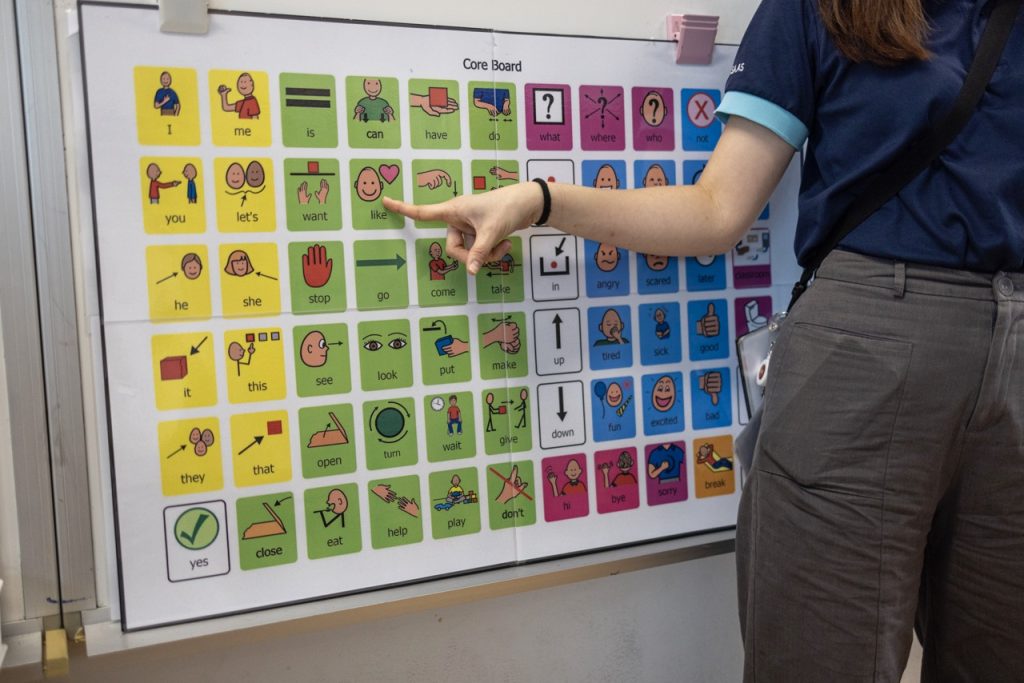
Imagine being unable to communicate how you feel when you are unwell, what you need or even what you want to eat. How frustrating that would be.
For most of SAAC’s beneficiaries on the moderate to severe autism spectrum who are non-verbal or have limited verbal abilities, the use of AAC (Alternative and Augmentative Communication) is a blessing and perhaps even a necessity. It gives them the ability to communicate and gives them a voice even if they cannot speak.
It has only been 2.5 months since Jovan, a nine-year-old student at St. Andrew’s Autism School (SAAS), started using AAC, yet the progress is clear. Whereas he used to communicate by pointing or using single words, he now makes a concerted effort to express himself by using more words or longer sentences through his AAC board.

Jovan’s teacher Amanda Poon, shared that since he started using the AAC, it has helped her get to know Jovan better, “Now, we know when Jovan is hungry and wants more snacks and what his favourite foods are. We will also know when he likes and dislikes something.”
“One day, we could not figure out why he was crying, so I took out his board and asked him “what’s wrong?”. Using the AAC board, he pointed out, “I want orange.” That was when we first realised that the communication system is working well for Jovan and that it is helping him organise his thoughts and verbalise his needs and wants,” recalled Amanda.

The AAC also allows the caregiver or teacher to teach and model various communicative functions such as requesting, greeting, commenting, protesting, asking/answering questions, and describing emotions. Jovan has also started using the AAC at home where he is also showing similar progress in his communication skills. His mum has expressed her happiness that he is now able to request for what he wants by using the board instead of crying or throwing a tantrum.

According to SAAC’s Speech Therapist Caleb Lai, a common misconception about AAC is that it will hinder or hurt the language development of the beneficiaries. However, Caleb explained that, “Research has shown that AAC actually boosts communication and even verbal speech for some of our beneficiaries with ASD. Ultimately, AAC is one of the most powerful tools in enabling our beneficiaries with autism to lead dignified and meaningful lives.”

—–
That autism is a spectrum is an oft-heard refrain. What does it mean exactly? With #StoriesofSAAC, we aim to promote understanding and acceptance of persons with autism wherever they lie on the spectrum. SAAC serves 450 clients, students and residents across the spectrum. Throughout April, we will share with you personal stories, the challenges, the moments of joy and why and how we are committed to our vision that no one with autism should journey alone.







